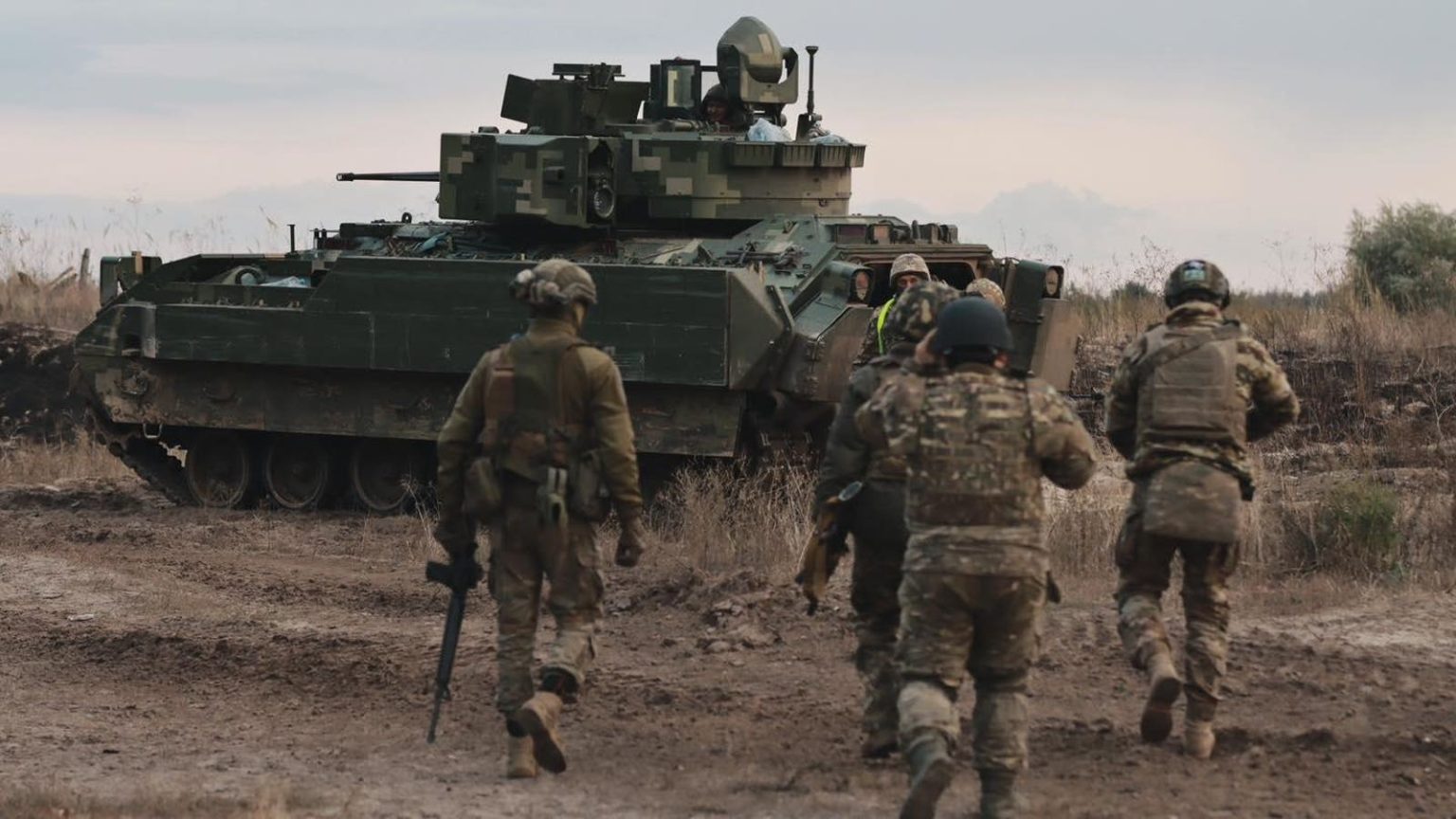With reporting from correspondent Gabriel Silveira.
The American-made M-2A2 Bradley is the best infantry fighting vehicle in Russia’s 23-month wider war on Ukraine—all thanks to its balance of protection, optics and firepower.
Protection
The steel and aluminum armor on the 30-ton, 10-person M-2 can stop 30-millimeter armor-piercing ammunition. Add reactive armor, and the BAE Systems-built Bradley also can stop 30-millimeter sabot rounds.
This is better protection than the Russian BMP-2 and BMP-3 IFVs enjoy. The BMP-2 can withstand 23-millimeter armor-piercing rounds, but only along its frontal arc; the BMP-3 can withstand 30-millimeter AP fire along the front.
The M-2’s Bradley Reactive Armor Tiles, or BRAT, also improve protection against hollow-charge munitions such as the RPG-7 as well as older anti-tank missiles with high-explosive anti-tank warheads.
For protection against mines, the Bradley has a nine-millimeter plate on the front of its belly. Moreover, the seven passenger seats are attached to the sides or ceiling in order to reduce the impact of a mine strike on the M-2’s occupants. The Bradley’s interior has a spall-liner that contains fragments and reduces risk from ricochets.
All this protection makes the M-2 an excellent medical-evacuation vehicle. There have been many reports of the Ukrainian army’s 47th Mechanized Brigade—the sole user of the roughly 200 M-2s the United States donated to Ukraine a year ago—deploying its Bradleys in the ambulance role.
Technology
The M-2 is equipped with a second-generation thermal vision system: the SADA-II. The same thermal sights also equip Ukraine’s 31 American-made M-1A1 tanks.
The thermal sight can detect a target at a distance of five miles with a resolution of 1,316 pixels per inch by 480. It comes with a laser rangefinder and GPS.
A Bradley commander can see what the gunner sees and attack targets on his own, but he doesn’t have his own thermal sight—nor even a dedicated daylight sight. He only has his periscope: eight transparent blocks that ring his turret hatch.
The Russians continue to use BMPs—BMP-1s and older BMP-2s and BMP-3s—that don’t have thermal sights. That means that, in an IFV-on-IFV fight, a Bradley often can see the Russian vehicle first, and at any time of the day.
Armament
The M-2’s primary weapon is an M242 25-millimeter auto-cannon that can fire armor-piercing sabot and high-explosive rounds. The M242’s maximum range is 1.2 miles. It fires 200 or 500 rounds per minute at a muzzle velocity of 3,600 feet per second.
The M242 is fully stabilized, so the Bradley can fire accurately while on the move. In one recent skirmish outside Avdiivka, in northeastern Ukraine, Two Bradleys used their auto-cannons to disable one of the Russian army’s best T-90M tanks.
To deal with a heavy target such as a T-90, the Bradley also has the option of firing, from a turret-mounted dual launcher, TOW-2B wire-guided anti-tank missiles. A crewman can reload the launcher via a hatch at the back of the hull.
The TOW-2B is a top-attack missile with a range of 4,900 yards. It flies over the target and, upon detecting it, discharges two explosive charges. On one occasion in Ukraine, a single Bradley firing TOWs defeated two Russian tanks.
With reporting from correspondent Gabriel Silveira.
Read the full article here





